The classes in Hearthstone all have their own gameplay. Sometimes they’re obvious, sometimes they’re rather vague, but surely anyone who’s played Hearthstone for a while has an idea of some of the abilities typical of all classes. For example, it is difficult to imagine a Control Rogue or Control Hunter deck, since these two classes both have tempo gameplay, even pure punching and Rogue can sometimes have combo decks thanks to his cheap spells. Priest, on the other hand, has a much slower, value-focused playstyle and it will probably do even more next year as combo potentials are removed from the Standard.
What about Demon Hunter? We already know some basics about Demon Hunter, like Hero Power 1 mana for +1 Attack in turn, how to play this class and some basic cards. But what will the real Demon Hunter experience be like? Can this class be expected to play like?
Face punch!
During the Demon Hunter announcement stream, Celestalon outlined Blizzard’s goal with this class in Hearthstone: “We wanted it to be a class that would be able to continuously attack, especially face punches. Not only thanks to Hero Power, there are many other ways that Demon Hunter can attack both sides.”
Iksar added: “Demon Hunter is always on the attack, making the most of Hero Power, and the enemy’s face is usually the target.”
Some possible tactics and strategies for Demon Hunter are also mentioned:
- Demon Hunters can spam many minions, but don’t buff them up, but instead benefit when they die.
- Demon Hunters draw cards quite well, can build combo decks.
- Demon Hunters can use large stats Demons at the end of the game.
So what will the above tactics look like in real combat?
Aggro Demon Hunter
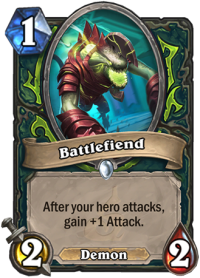
Demon Hunter is a fast attack class, and playing Aggro clearly fits this trait. The Demon Hunter’s first set includes perhaps one of the most powerful 1-mana minions in the game, Battlefield. It needs to be dealt with as quickly as possible, otherwise it can cause a lot of damage. If the cards are good, Demon Hunter can continue with Umberwing on turn 2 and Satyr Overseer on turn 3. When facing a slow Control deck that often skips the first turns, such as the current Highlander Mage, Demon Hunter can deploy with 2 4/2s, one 2/2 and two 1/ 1 on turn 3! Twin Slice and Eye Beam eliminates enemy threats with no mana cost, so a board with minions like the one above is achievable even with an opponent with better early game tempo.
Aggro Demon Hunter doesn’t need to care much about total health, so this class’s Hero Power is very suitable for clearing a few small early-game enemy monsters and preserving their own, allowing them to be punched continuously. This gameplay can be quite similar to the current Dragon Hunter, the difference is that Dragon Hunter can use spells and Battlecry to maintain the table, while Demon Hunter will mainly rely on Hero.
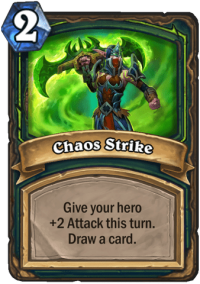
Demon Hunters has a lot of cheap draw cards and can overcome the inherent problem of Aggro decks in drawing ability. Chaos Strike can become an important card in any Demon Hunter deck, as it fits the plan of using Hero to attack and in addition it adds a draw effect. Power Word: Shield before nerf is probably the closest card that Chaos Strike has shown to be quite similar. Consume Magic and Spectral Sight are also good for Aggro, as they are cheap cards to get more resources in the deck. With Silence’s ability Consume Magicthe Taunt minions will be easier to overcome.
Metamorphosis Give Demon Hunter a little burn in the middle of the game or to finish off the opponent if you lose a goal. No more Leeroy Jenkins more, but maybe this shouldn’t be a big deal for Demon Hunter’s finishing damage.
Decks like Face Demon Hunter are likely to have some success, especially at low ranks, where new players can play this deck for free. In Hearthstone, tempo is key to victory, and Aggro Demon Hunter has plenty of tools to set and then maintain tempo.
Token Demon Hunter
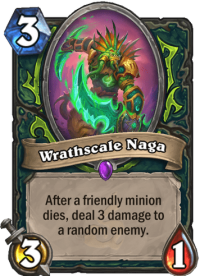
During the announcement, Celestalon and Iksar presented the ability to play Demon Hunter Tokens. If it were indeed playable, it would be very different from Token strategies in Hearthstone history as Demon Hunter is not capable of buffing minions, but instead benefits from these Tokens dying.
There has never been a Token deck that could not buff the table or at least increase Attack in one turn for all minions: Savage Roar, Murloc Warleader, Bloodlust, Unseal the Vault – all successful Token decks have some way to effectively increase Attack.
Demon Hunters has cards like Wrathscale Naga deal damage when the Token dies and Feast of Souls allows Demon Hunter to draw a lot of cards when many Tokens die in one turn, but this class has no way to make Tokens stronger.
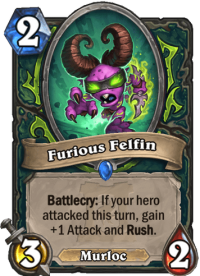
Tokens with Rush are generated with Coordinated Strike and Command the Illidari, but perhaps this gameplay still lacks something to be playable. We haven’t seen all of Demon Hunter’s cards yet, so more cards like Wrathscale Naga can support quite well, but with the cards currently announced it is difficult to believe that Token will be the main way of Demon Hunter.
What about Murloc? Furious Felfin is a Demon Hunter Murloc. Murloc can receive Attack buffs from Murloc Warleader, and thereby overcome the lack of class buffs. The only Neutral Murloc that left Standard in April was Murloc Tastyfin, and Demon Hunter already has a lot of cheap draw cards, so the aforementioned Murloc is probably not too important. Murloc Demon Hunter will definitely be played and maybe it can work.
Control Demon Hunter
Does this gameplay go against the hallmarks of Demon Hunter?
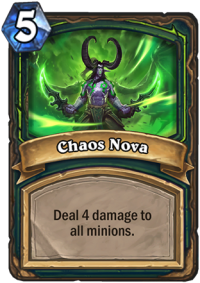
We can start by wondering why Hunter can’t play Control? Lack of clearing tables and picking cards. Demon Hunters have Chaos Nova and lots of cards. What about Rogue, another class that can play tempo like Demon Hunter, why is there no Control Rogue? Because Rogue can’t heal, except in Kingsbane Rogue with Leeching Poison has now been nerfed. Demon Hunters have a few Lifesteal cards, although they tend to have a small amount of healing rather than a strong heal.
Demon Hunter doesn’t have the tools to drag matches to fatigue and value matches. Therefore, all Control Demon Hunter decks, if any, will have to have a more active way of ending the match than waiting for the opponent to die first.
For a Control deck, large Demons can play an important role. By now Demon Hunter has Hulking OverfieldPit Commander and Imprisoned Antaenand Neutral doesn’t have a big enough Demon.
When faced with a true Control deck, the big Demons don’t look very promising. They don’t get to the table quickly, and when they do arrive late in the game, they can be dealt with with the clearing tools that every Control deck has. However, they can be quite strong against decks, as if Demon Hunter survives long enough to play them out, their base stats aren’t easy to beat and Demon Hunter can therefore be fast. close the game quickly.
Combo Demon Hunter in Hearthstone
Some clearing cards, some draw cards, some healing. That’s what a combo deck requires, and the Demon Hunter Combo fulfills all of the above. Of course, real combos can’t be created with Standard cards and announced cards yet.
In Wild there is now at least one deck: first, Demon Hunter needs to play Emperor Thaurissan cost reduction Garrison Commander, Prince Taldaramand Clockwork Automaton (two out of three is enough). Next, play Metamorphosis and don’t use Hero Power immediately. On the next turn, Demon Hunter plays all of the above minions and can use Hero Power twice, dealing 20 damage each time for a total of 40 damage.
Combo Demon Hunter is quite similar to Combo Rogue: the ability to clear the table and heal is limited, so combo speed is paramount. Demon Hunter can clear the table and heal better than Rogue, and so this playstyle can be quite stable if a suitable combo is found.
Demon Hunter’s Playstyle in Hearthstone
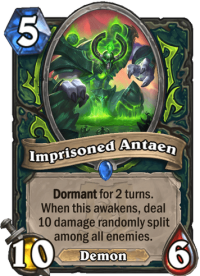
If Hearthstone is the battle for tempo, Aggro Demon Hunters will probably be the most successful deck of this class. It has all the tools to quickly take the table and eliminate the opponent’s threats relatively effectively, and the game can be over quickly.
The big Demons are also quite interesting. Most likely there will be a Demon Hunter deck that is a hybrid between Midrange and Control: often have to defend early in the game to buy time for Imprisoned Antaen and then there’s an explosive turn in the middle of the game. Other Control decks will most likely be able to cope, but the current meta has no place for Control decks, and so if Demon Hunter can’t be finished early, Aggro decks won’t be able to deal with these. Demon Hunter’s mid-battle minion.
Token strategy can only be effective if there are other support cards. In the worst case, there is always the Murloc.
Combo Demon Hunter is waiting for his first authentic combo.
Overall, Demon Hunter is a pretty strong class and fits very well with Hearthstone’s design philosophy: to actively win goals and then maintain tempo. This is not a class that plays in the direction of Control, but on the contrary, as the two designers said, focuses on punching the opponent’s face as much as possible.
Source: hearthstonetopdecks.com
Watch part 2 here:
See more about Year of the Phoenix:
Source link: Hearthstone: Demon Hunter class potential gameplay
– https://emergenceingames.com/



